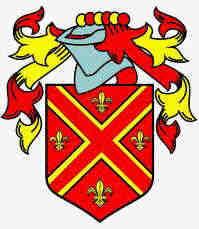Farr, Alfred (Alf) (Private )
- Born: Abt 1864
- Died: 1879 Jan 22, Isandhlwana, KwaZulu Natal, (Zululand), South Africa aged about 15

 General Notes: General Notes:
Eleven days before the historic Isandlwana battle, during which the British army was to suffer its biggest defeat ever at the hands of a native military foe, British High Commissioner in South Africa at the time, Sir Bartle Frere, had launched an invasion of Zululand after the expiry of his impossible ultimatum to the Zulu King Cetshwayo had expired. Frere was trying to establish a confederation of white-led states in southern Africa, but the Zulus stood firmly in the path of his ambitions.
Under the command of Major General Lord Chelmsford, three columns were sent to converge on the Zulu Royal ikhanda - or military camp - at Ulundi. The coastal column was commanded by Colonel Charles Pearson, the central column by Colonel Richard Glyn, and the third - highly mobile - column by Colonel Evelyn Wood. In addition, Brevet Colonel Anthony Durnford and Colonel Hugh Rowlands each commanded an additional reserve force.
The Battle of Isandlwana on 22 January 1879 was the first major encounter in the Anglo-Zulu War between the British Empire and the Zulu Kingdom. Eleven days after the British commenced their invasion of Zululand in South Africa, a Zulu force of some 20,000 warriors attacked a portion of the British main column consisting of about 1,800 British, colonial and native troops and perhaps 400 civilians. The Zulus were equipped mainly with the traditional Assegai iron spears, iklwa, and cow-hide shields, but also had a number of muskets and old rifles though they were not formally trained in their use. The British and colonial troops were armed with the state-of-the-art[15] Martini-Henry breech-loading rifle and two 7 pounder artillery pieces as well as a rocket battery. Despite a vast disadvantage in weapons technology, the numerically superior Zulus ultimately overwhelmed the poorly led and badly deployed British, killing over 1,300 troops, including all those out on the forward firing line. The Zulu army suffered around a thousand killed.
The battle was a crushing victory for the Zulus and caused the defeat of the first British invasion of Zululand. The British army had suffered its worst defeat against a technologically inferior indigenous force.[20] However, Isandlwana resulted in the British taking a much more aggressive approach in the Anglo-Zulu War, leading to a heavily reinforced second invasion and the destruction of King Cetshwayo's hopes of a negotiated peace.
When Lord Chelmsford and his half of the invasion force returned to Isandlwana they were met by an horrific sight, as Private William Meredith of Pontypool noted in a letter to his brother:
"I could describe the battlefield to you - the sooner I get it off my mind the better. Over a thousand white men lying on the field, cut to pieces and stripped naked. Even the little boys that we had in the band, they were hung up and opened like sheep. These are the Pontypool boys that got killed in battle: Alf Farr, Dick Treverton and Charley Long. (Pontypool (Welsh: Pont-y-pwl) is a town of approximately 36,000 people in the county borough of Torfaen, within the historic boundaries of Monmouthshire in South Wales)
|

 General Notes:
General Notes: